
In the midst of a move from California to Massachusetts in January 2005, Tingshu Hu and her husband, Philip Zhao, saw a single crabapple tree surrounded by deep snow and adorned with red fruit that glimmered in the winter sun. Little did they know that this tree would be the spark of inspiration that would lead to the web of lush garden rooms that make up their yard today. Enthralled, they knew they needed a variety, like ‘Prairiefire’ crab-apple (Malus ‘Prairiefire’ Zones 4–8), of their own. “We were so impressed and decided to plant one in the center of our new backyard,” Tingshu says. “This is the first tree we planted, and all the other plants and garden features were built around it.”
Garden at a Glance:Location: Dunstable, Massachusetts Size: 1 acre Zone: 6 Conditions: Full sun to partial shade; loamy soil Age: 20 years |
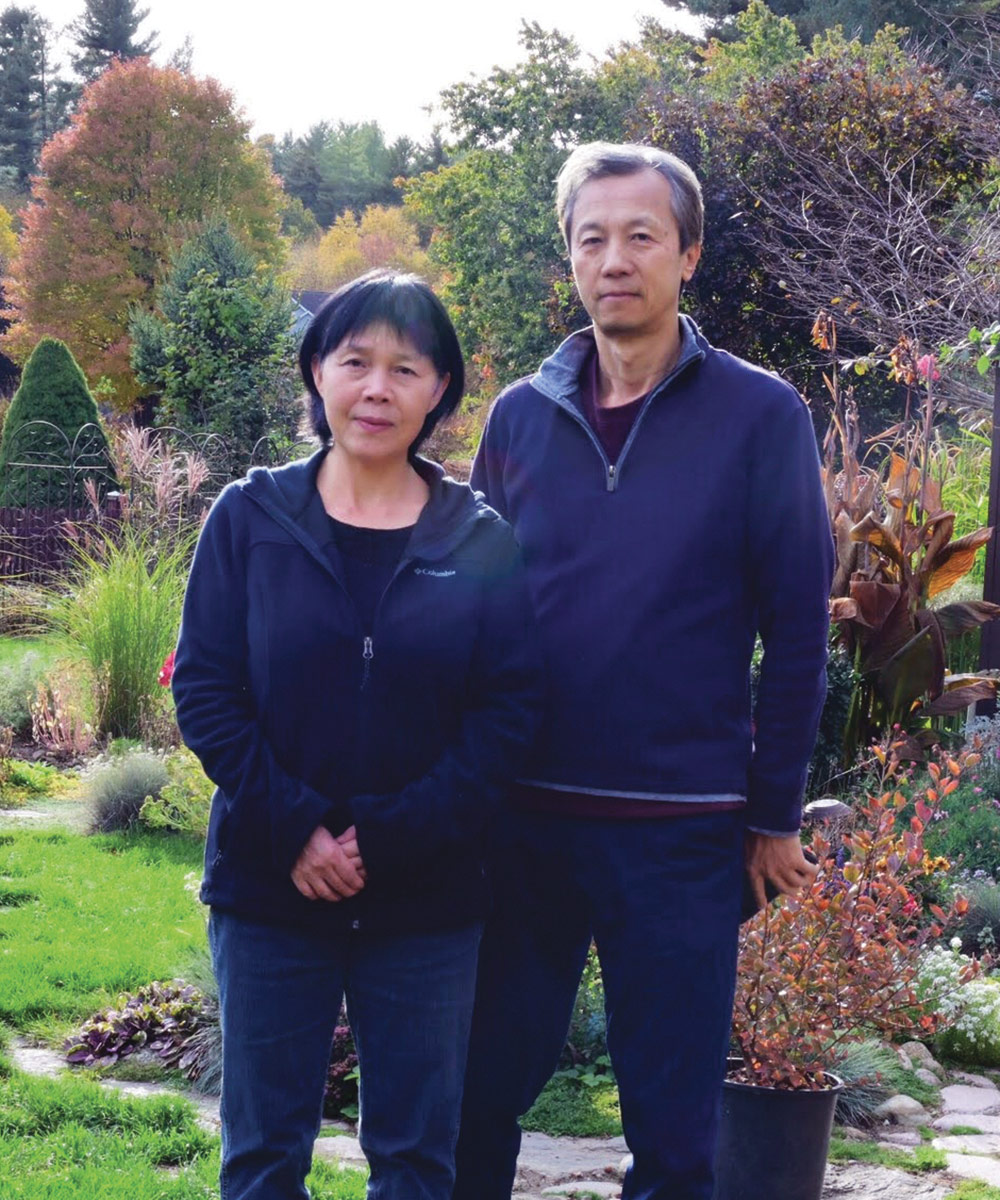
As they worked around this starting focal point, they pulled from the best elements of English and Chinese garden design to create a cohesive space that manages to look far more tropical than a New England climate should allow. “The overall landscape design was inspired by the four elements of Chinese gardens: plants, water, rocks, and structures,” the couple say. Tingshu handles the plants, creating flower beds of “organized chaos” characteristic of English cottage gardens, while Philip builds the structures and captures the landscape beautifully in his photography.
As you might imagine, flowering trees and shrubs are essential plants in their design. Since the first crabapple investment, they have added 23 more flowering woodies to the property. Some other favorites include their weeping ‘Louisa’ crabapple (Malus ‘Louisa’, Zones 4–8), eastern redbud (Cercis canadensis, Zones 4–9), Stellar Pink® dogwood (Cornus ‘Rutgan’, Zones 5–8), and ‘Crimson Cascade’ weeping peach (Prunus persica ‘Crimson Cascade’, Zones 5–9). However, their garden is rich with nearly every classification of plant. Trees and shrubs do not need to flower to be worthy of a space; conifers, Japanese maples (Acer palmatum and cvs., Zones 5–9), and redtwig dogwoods (Cornus sericea and cvs., Zones 2–7) add incredible foliage and bark interest. An abundance of bulbs make an appearance in spring, and various perennials like catmint (Nepeta spp. and cvs., Zones 3–8), lady’s mantle (Alchemilla mollis, Zones 4–7), meadow rue (Thalictrum spp. and cvs., Zones 3–9), and Japanese anemone (Anemone hupehensis, Zones 4–8) provide a range of colors and textures from March to October. Ornamental grasses soften edges while ground covers like ‘Magic Carpet’ creeping thyme (Thymus serpyllum ‘Magic Carpet’, Zones 4–9) and ‘Baby Tears’ sedum (Sedum album var. chloroticum ‘Baby Tears’, Zones 4–9) fill up the gaps.
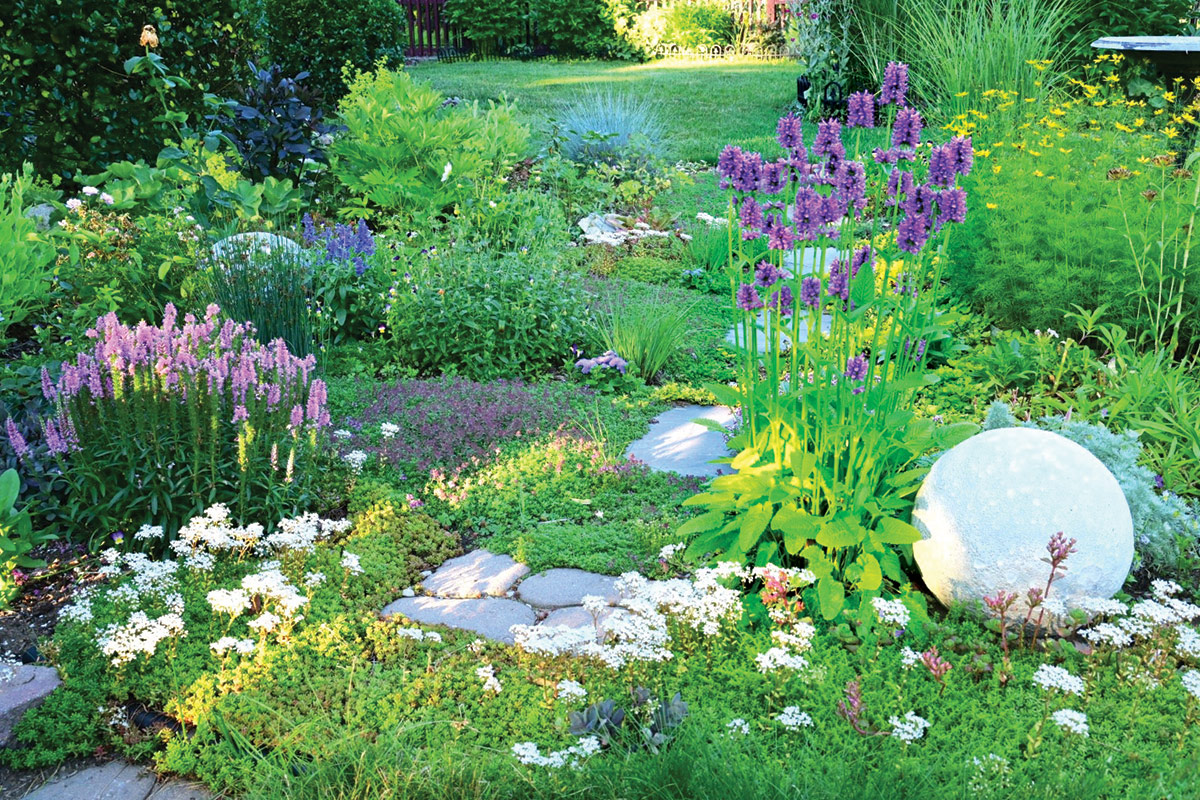
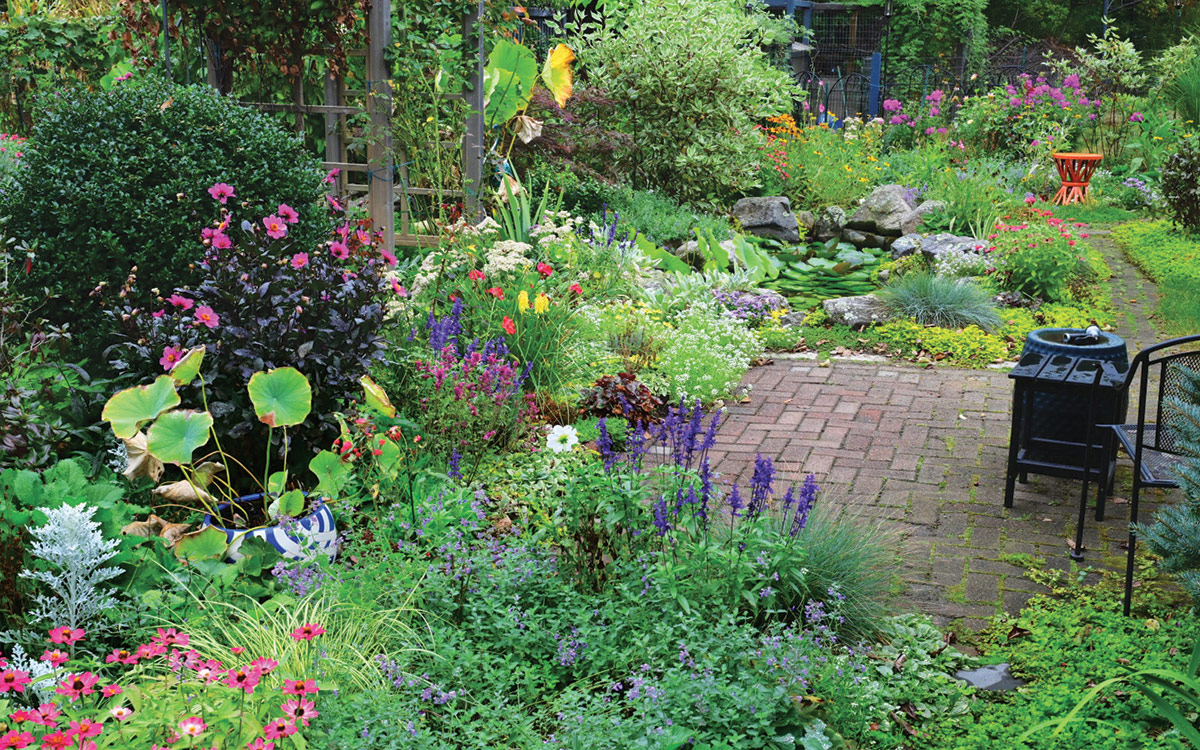
The element of water was added in the form of two gorgeous ponds, and copious rocks found on the property meant free material for creating retaining walls. Philip has been hard at work in the years since moving to his new home building pergolas, arbors, fences, patios, paths, bridges, a greenhouse, and even an aquaponics system. From design to construction, the couple create everything themselves.
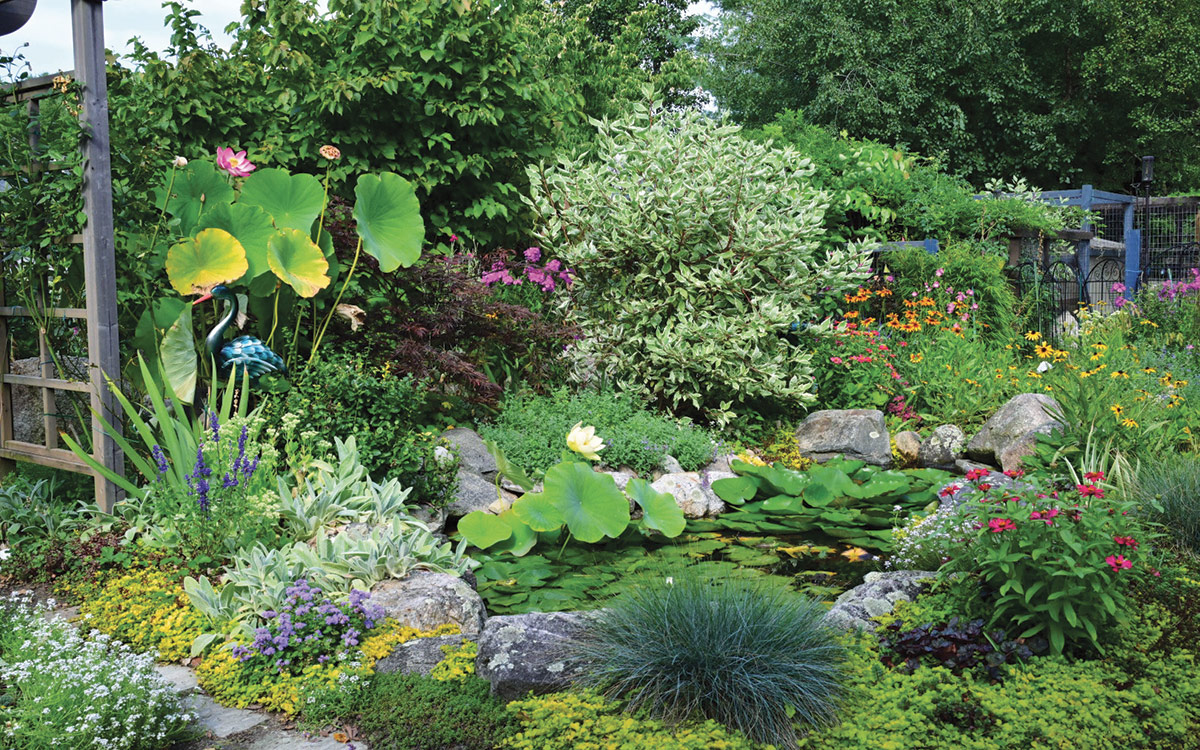
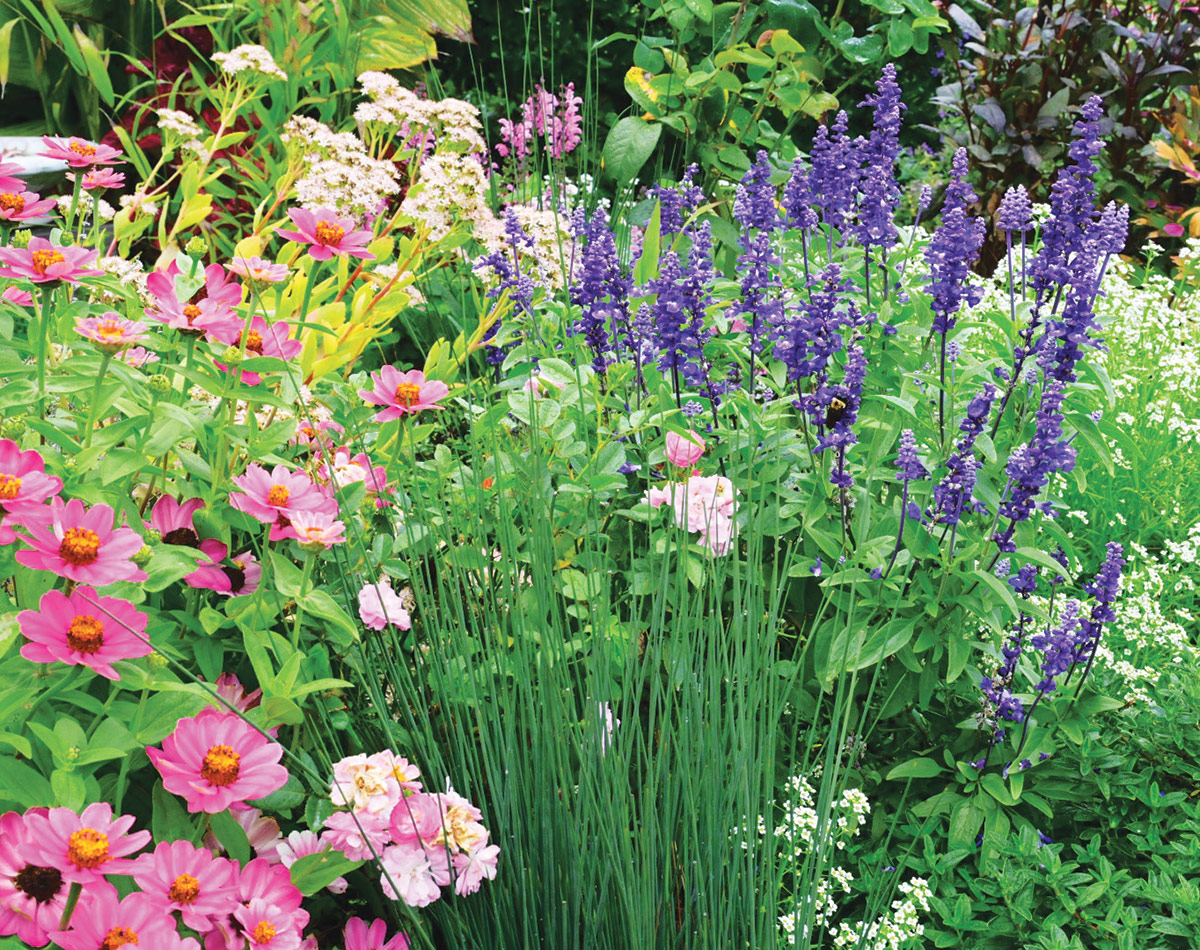
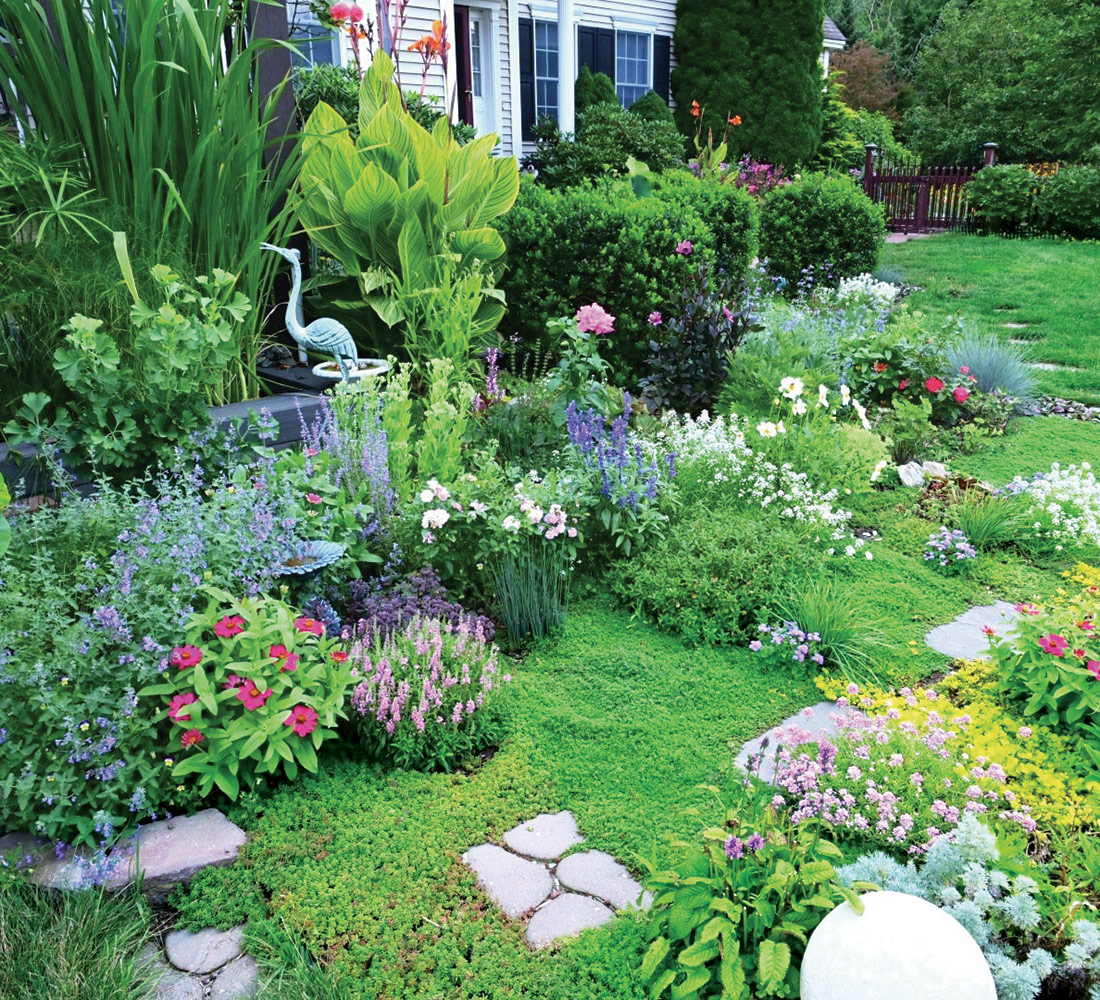
Of course, nothing this rewarding is without its challenges, and Tingshu and Phillip have dealt with two small but persistent pests: rabbits and voles. Rabbit-proof fencing covers three-quarters of their lot, offering protection to many of their prized plants, but voles require a bit more creativity. Planting the most tempting specimens within metal mesh baskets has helped, though it greatly increased maintenance needs. Peppermint (Mentha × piperita, Zones 5–8) proved to be somewhat effective in deterring their voles, but its aggressive spreading is not easily controlled. The best method so far has been supporting a growing population of garden snakes. “We’re actually very happy to see the snakes, which some might find odd,” Tingshu says.
As the garden continues to grow and evolve around that original crabapple that started it all, the assortment and composition of plants, water, rocks, and various structures continue to elevate the design. With each passing year, more garden rooms emerge for Tingshu, Phillip, and their two dogs, Luke and Deedee, to enjoy.
Kaitlyn Hayes is the editor of the Garden Photo of the Day blog. Follow her on Instagram @agirlherdogandtheroad.
Photos: courtesy of Philip Zhao
Have a garden you’d like to share?
Have photos to share? We’d love to see your garden, a particular collection of plants you love, or a wonderful garden you had the chance to visit!
To submit, send 5-10 photos to [email protected] along with some information about the plants in the pictures and where you took the photos. We’d love to hear where you are located, how long you’ve been gardening, successes you are proud of, failures you learned from, hopes for the future, favorite plants, or funny stories from your garden.
Have a mobile phone? Tag your photos on Facebook, Instagram or Twitter with #FineGardening!
Do you receive the GPOD by email yet? Sign up here.
Fine Gardening Recommended Products

Planting in a Post-Wild World: Designing Plant Communities for Resilient Landscapes
Fine Gardening receives a commission for items purchased through links on this site, including Amazon Associates and other affiliate advertising programs.

A.M. Leonard Deluxe Soil Knife & Leather Sheath Combo
Fine Gardening receives a commission for items purchased through links on this site, including Amazon Associates and other affiliate advertising programs.




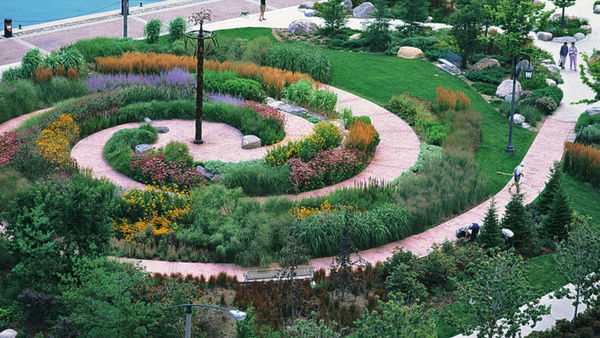
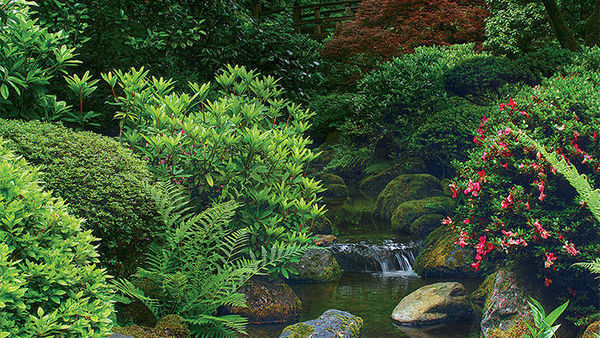
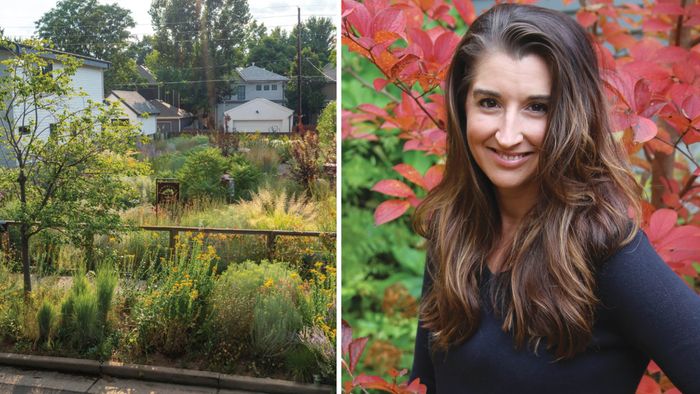
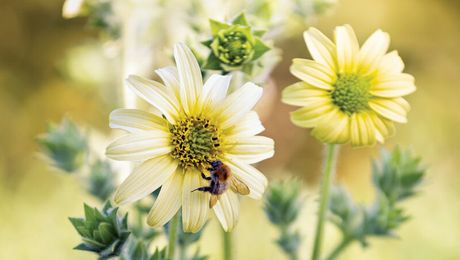
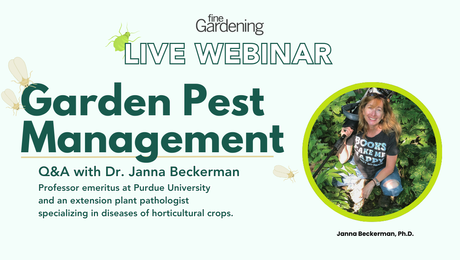










Comments
A terrific feature of Tingshu and Philip's garden! The planning, engineering, and maintenance is all amazing with such beautiful results.
Thanks Cynthia! We truly appreciate your encouragement!
Thanks Kaitlyn! You have done a wonderful job writing this featured article about our gardening experience! I will share it with my friends and fellow gardeners.
Log in or create an account to post a comment.
Sign up Log in